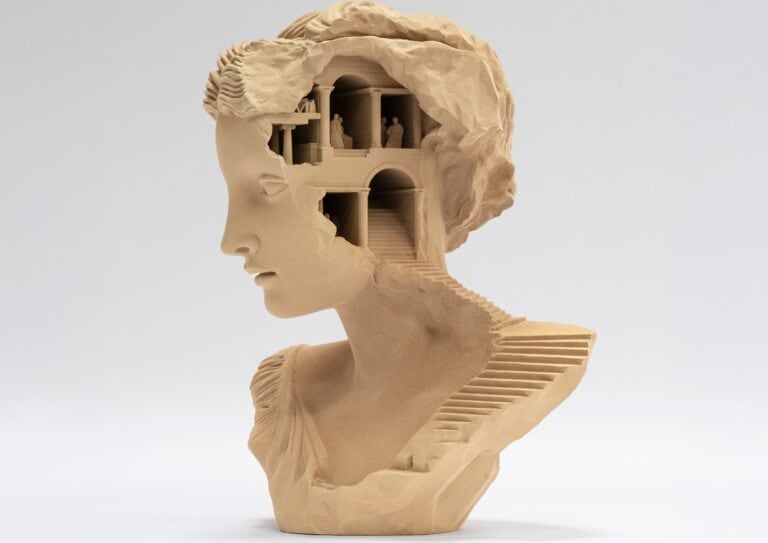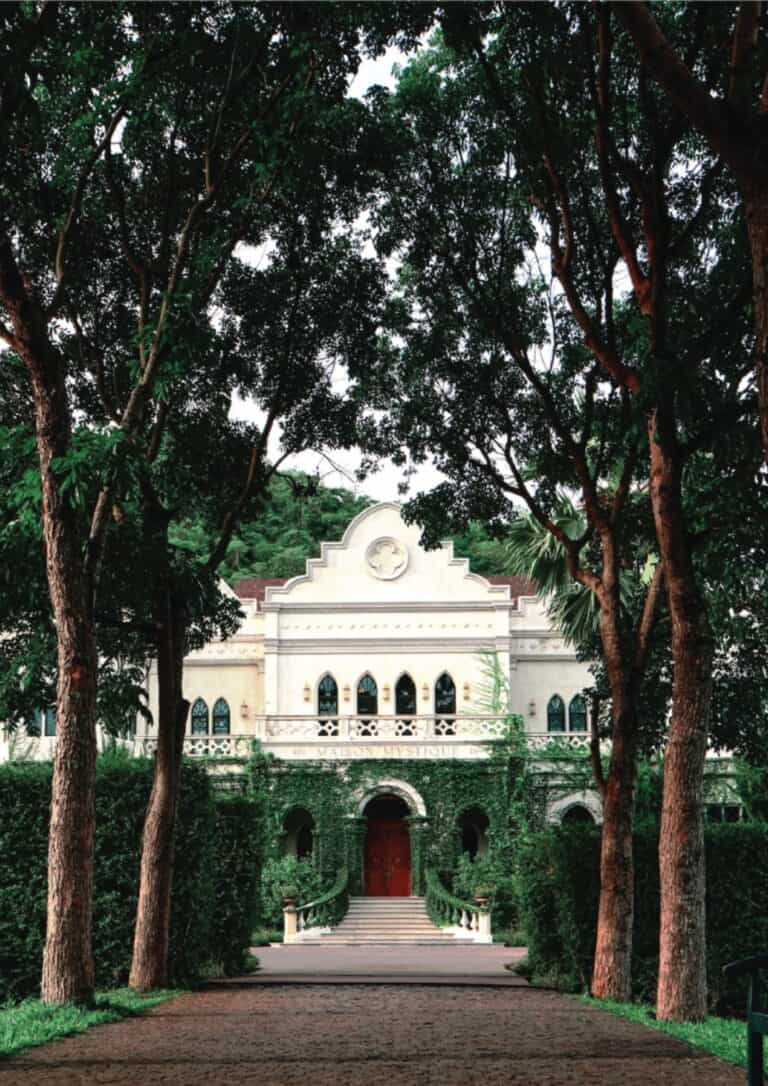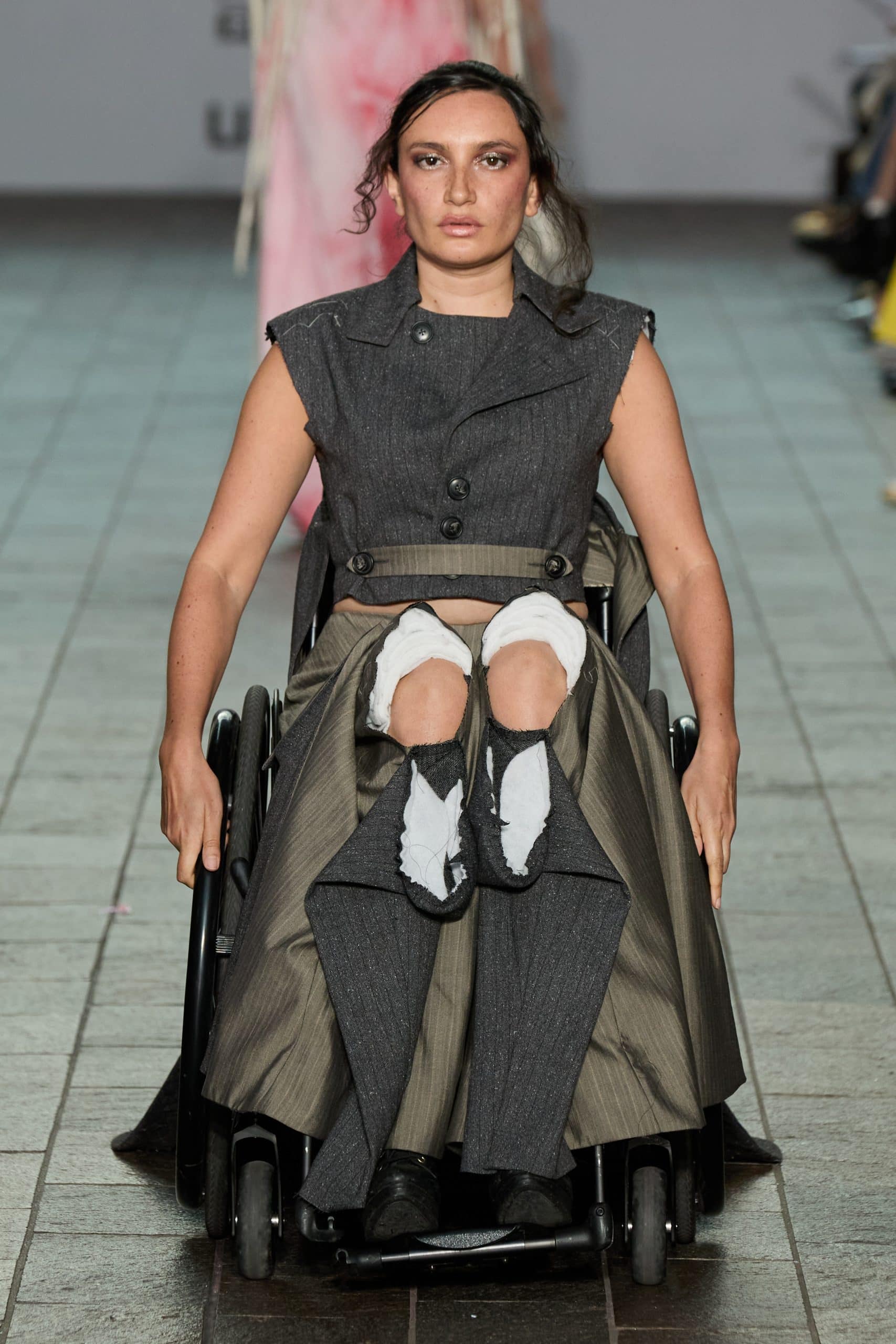
HANNAH SMITH REDEFINES INCLUSIVE FASHION
Marie Loire Moulin
Hannah Smith redefines fashion through poetic design, disability visibility, and hybrid aesthetics. Although inclusive fashion has long been marginalized or reduced to functionality, today a new generation is reshaping the narrative. In fact, Hannah Smith doesn’t treat inclusivity as an afterthought. Instead, she places it front and center, both in design and intent. A graduate of Central Saint Martins, she crafts clothes that speak through structure, silhouette, and symbolism. Ultimately, her practice isn’t about making do. Rather, it’s about making meaning.
HANNAH SMITH: A DESIGN PHILOSOPHY OF CONTRAST
Hannah Smith describes her work as a “process-based exploration” of dualities. She seeks harmony in contradiction: organic versus mechanical, traditional versus speculative. For instance, her graduate collection, built on the symbolism of wrought iron gates, evokes both restriction and resilience. Inspired by the shadow of a gate cast each night on her walk home, she translated that hard geometry into delicate, wearable forms. As she explains, “It reminds me of the medical metalwork inside my brother’s back. It speaks of the vulnerability of the body.” Her silhouettes echo 19th-century British fashion, influenced by the Brontë sisters and her rural upbringing. However, nothing is nostalgic. A bustle shifts to the knees. A tailcoat becomes a skirt. Thus, romanticism mutates under her hands, revealing something entirely contemporary.
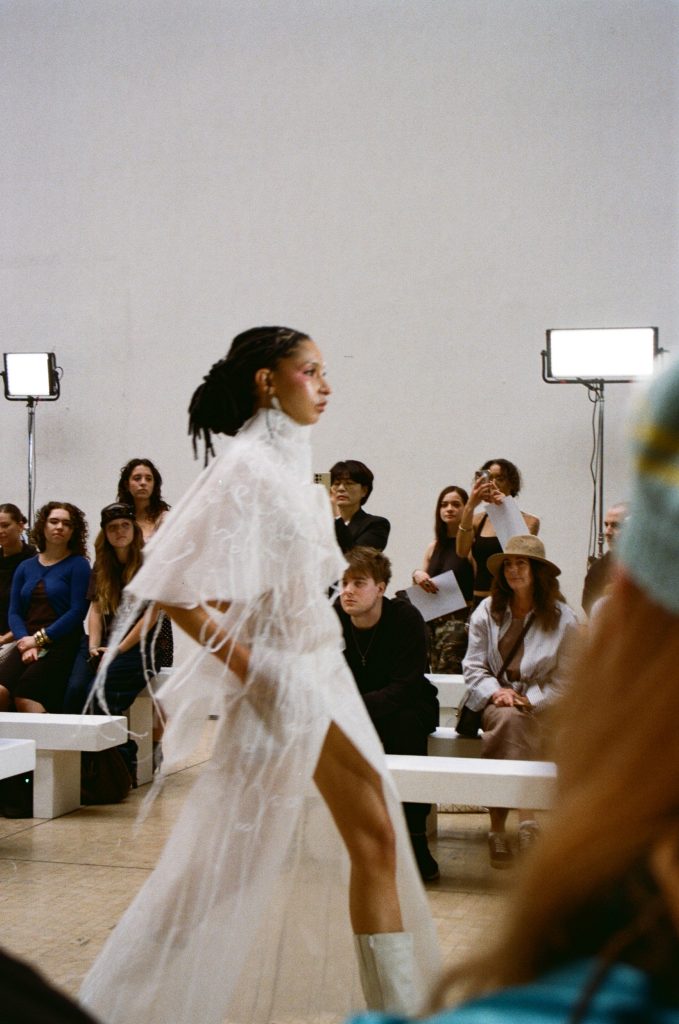
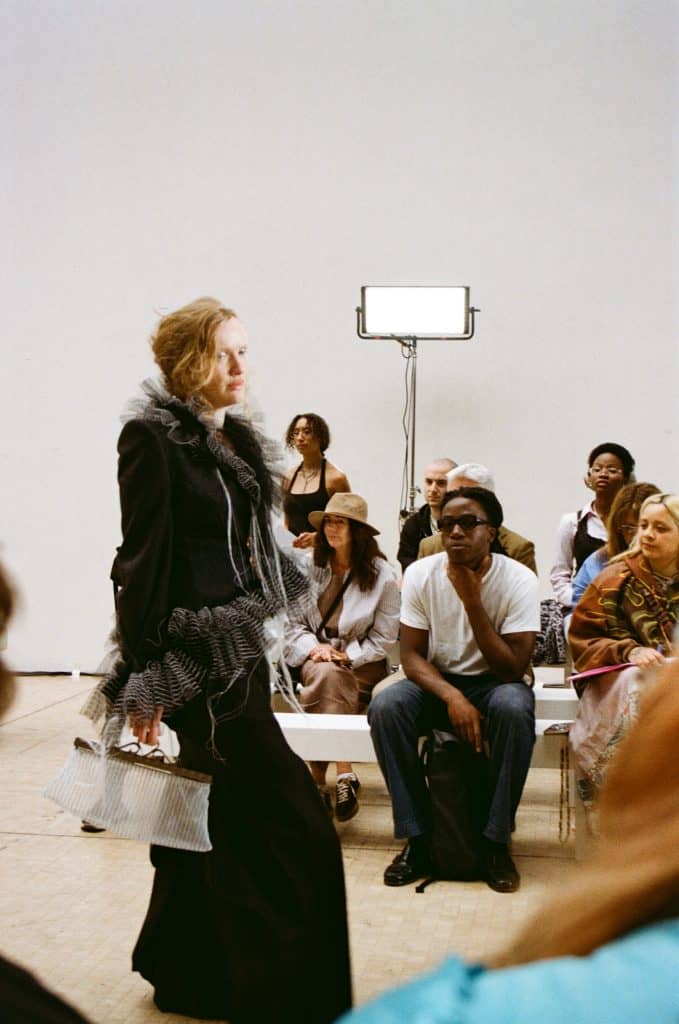
On the runway at CSM, Hannah Smith’s rework historical references with grace and rebellion. Courtesy of Hannah Smith
HANNAH SMITH: MATERIALS THAT CARRY MEANING
Whether soft wool or striped tailoring, Hannah Smith chooses her materials through instinct and intention. Some speak symbolically. Others react with the body in unexpected ways. “I love when the material contradicts the shape or reference,” she explains. “It depends on the design.” Her go-to method: reuse. She often sources fabrics secondhand or draws from her own archive. A corset that accentuates a seated posture. A crinoline that challenges traditional placement. Each piece becomes both a garment and a question. She resists binary thinking—able-bodied versus disabled, feminine versus masculine, reimagining silhouettes with a critical but poetic eye.
HANNAH SMITH: DESIGNING THROUGH LIVED EXPERIENCE
“My brother’s life with a physical disability influences my work deeply,” she says. Some garments address real functional needs. Meanwhile, others dismantle harmful narratives around disability. “Once you see it, you can’t unsee it.” Therefore, this clarity fuels her mission: to reimagine how disability is expressed and empowered within fashion. In addition, Hannah’s references extend beyond the runway. Notably, Christo and Jeanne-Claude’s “Wrapped Trees” inspired her textile wrapping techniques. Consequently, her practice weaves personal memory with material experimentation.
HANNAH SMITH:FROM CONCEPT TO CONSTRUCTION
“I drape, draw, Photoshop, make maquettes, and re-drape,” Smith says of her process. Sometimes it starts with intention. Other times, with materials. At times it’s linear. Often, it spirals. Eventually, once the concept is clear, she switches modes. “I escape into construction,” she admits, “and get caught up in the problem-solving.” Indeed, Smith’s fine art background taught her to value the making over the made. “Even if my outcome isn’t breathtaking, I take pride in the journey and the intention.” As a result, her process embraces imperfection, experimentation, and instinct.
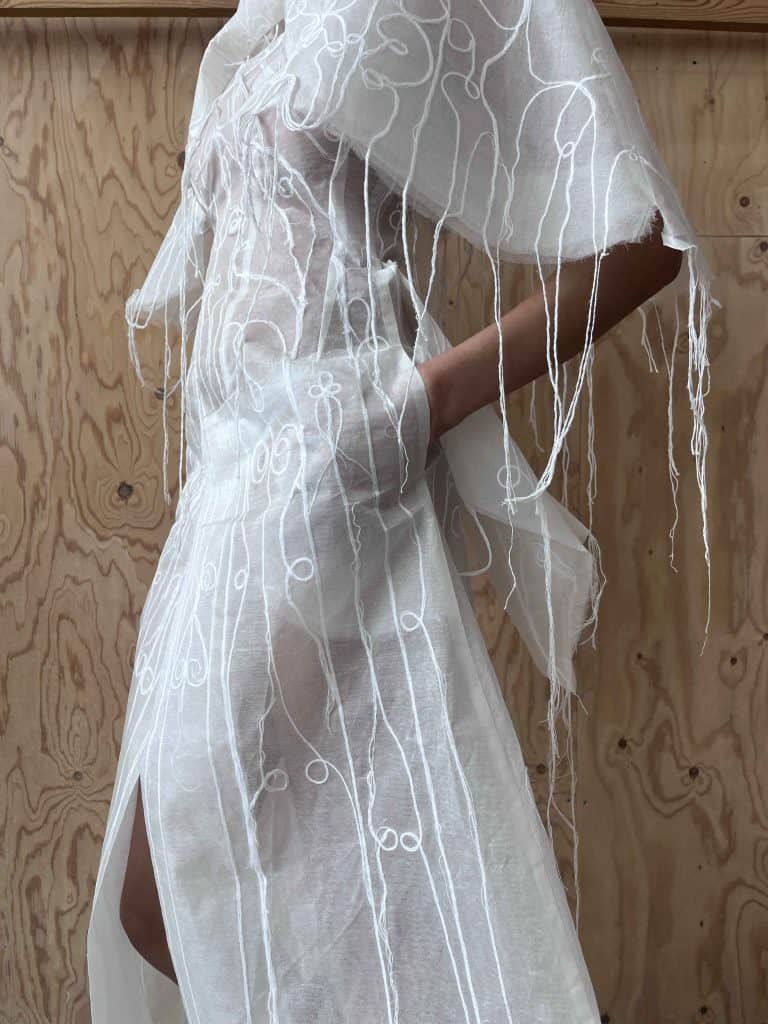
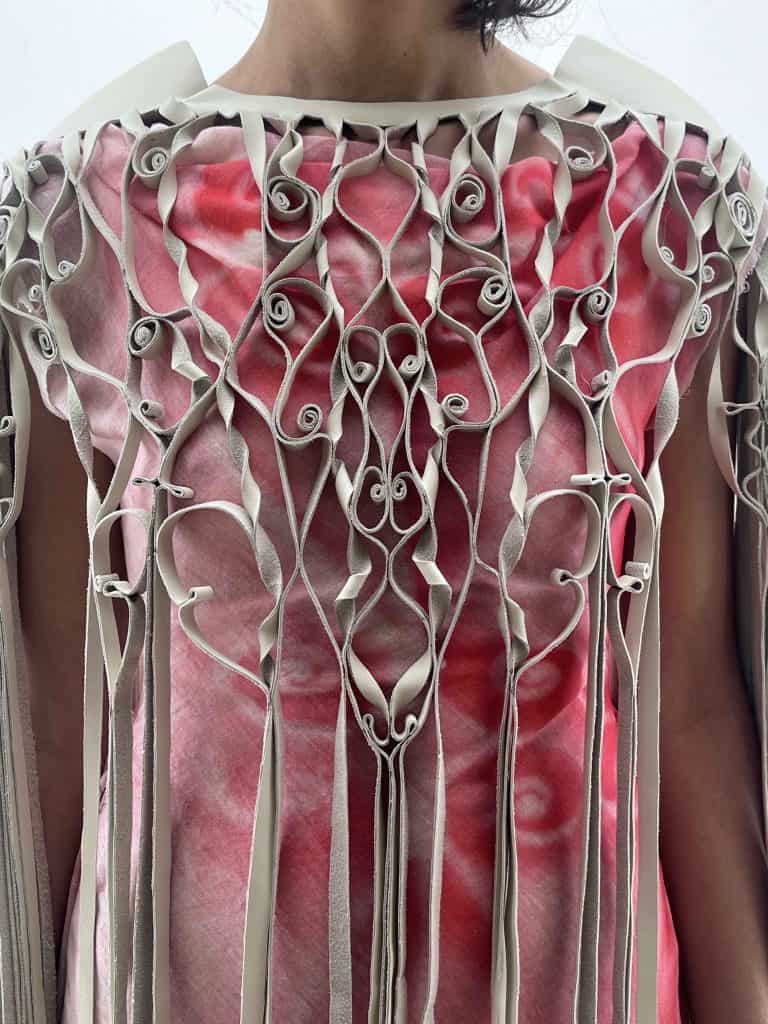
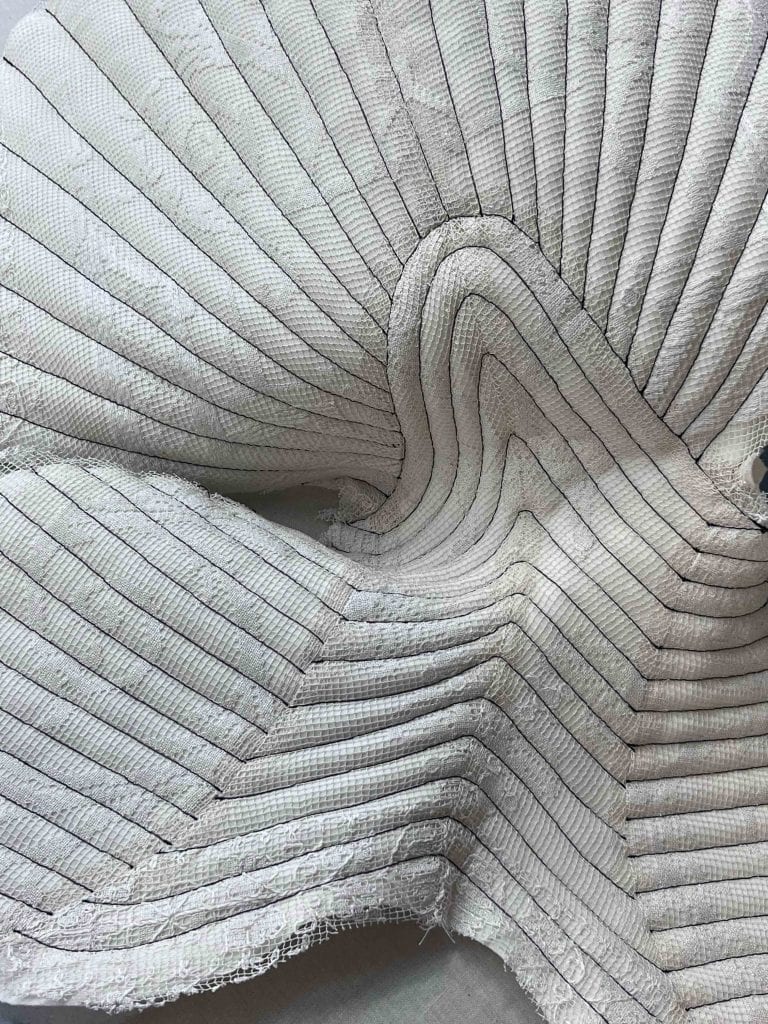
From knots to folds, her textures draw from both medical structures and romantic handcraft. Courtesy of Hannah Smith
A FASHION FUTURE ROOTED IN EXPRESSION
What does she want to shift in fashion? “I want seeing disabled models to not be so surprising,” she states. Beyond representation, she calls for expressive, experimental design that doesn’t reduce disabled bodies to practical needs alone. She envisions a slower, more intentional industry, one where garments hold personal meaning, not just trend value. While she dreams of mastering digital pattern-cutting to reduce waste, for now her process stays tactile. “Photoshop helps me visualize, but it’s mostly hands-on.”
HANNAH SMITH: ORIGINS AND ASPIRATIONS
Smith’s path began in a high school art studio. Her teacher introduced her to Central Saint Martins. “He was, and still is, such an incredible support.” At school, she sculpted the body before dressing it. Fashion emerged from form, not trend. One goal: collaborate with The Alternative Limb Project to design prosthetics in sync with her garments. Another: work with artists and engineers on conceptual mobility aids that empower and provoke. “I’d love to create bespoke, kinaesthetic or sound art relating to the mechanics of mobility aids,” she says.
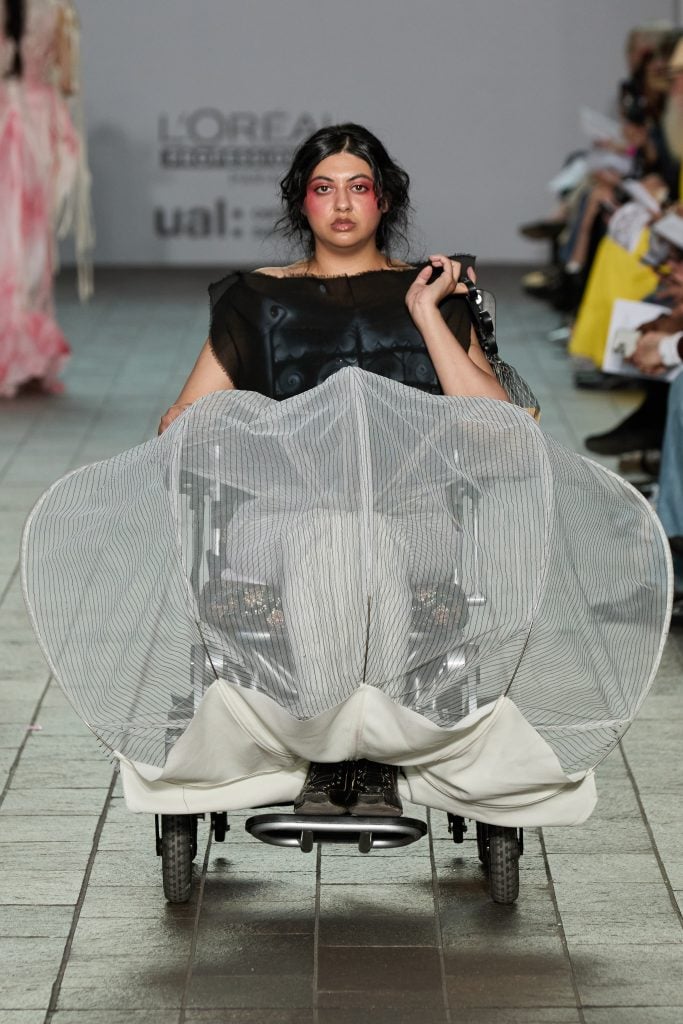
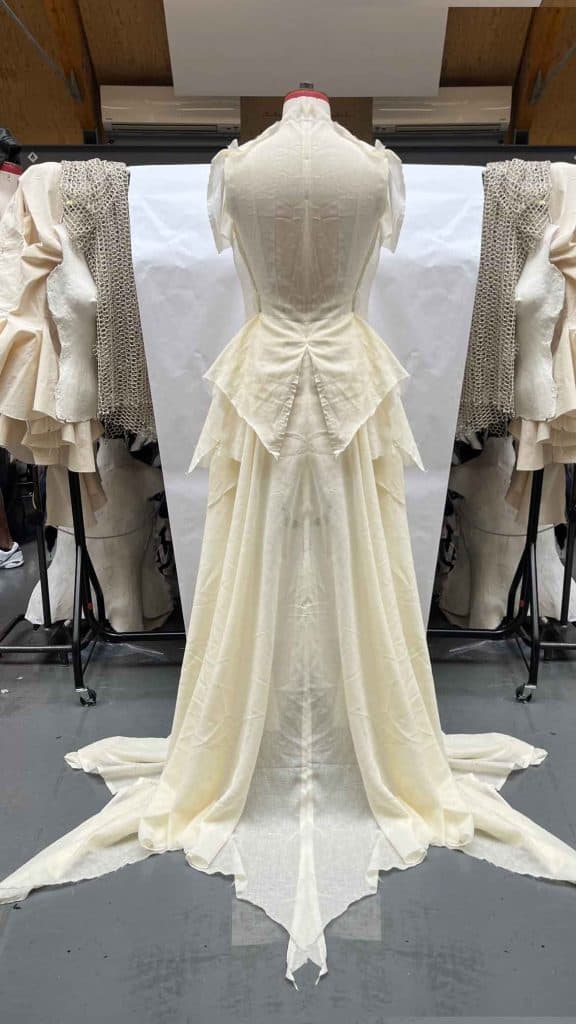
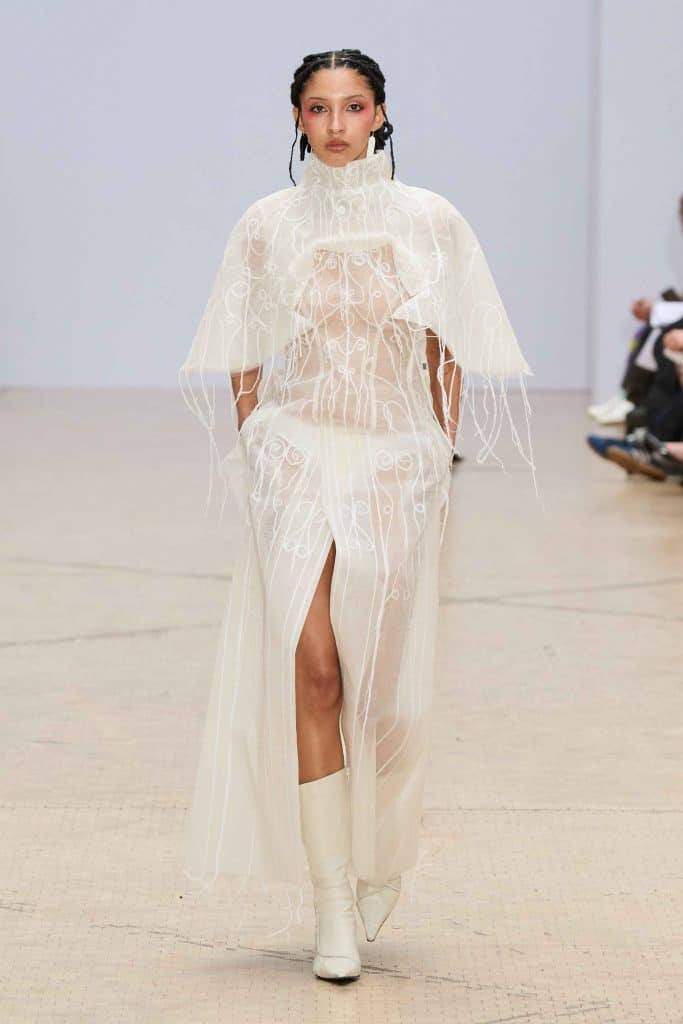
A nod to 19th-century silhouettes, her designs reinvent historical codes through a contemporary, inclusive lens. For Hannah Smith redefines fashion. Courtesy of Hannah Smith
COLLABORATIONS IN PROGRESS
While no dates are set, Hannah teases a future collaboration with Naadirah Qazi, musician, poet, model. They’ve already worked together on her final collection. Now she wants to design pieces that reflect and empower both bodies, disabled and non-disabled. She’s also curating a publication of her collection: images, poetry, ideas. A tactile archive of vision made visible.
FOLLOW THE PRACTICE
You can discover more of Hannah Smith’s universe on Instagram: @hannahsmi.h. Expect upcoming projects, insights from her collection, and glimpses into her ongoing design research.
Did you enjoy Hannah Smith redefines fashion? Discover ANTON FEMIA DREAMS IN TEXTILES.
Share this post
Marie Loire Moulin approaches fashion as an immersive language—one that expresses identity, character, and cultural influence. Echoing Jean Cocteau’s observation that “Fashion is what goes out of fashion,” Moulin embraces the paradox at the heart of her craft. For her, fashion is a living, breathing art form—constantly deconstructed, reimagined, and reshaped in response to the world around it.
What fuels Marie Loire’s creativity is the ability to blend worlds—to explore the intersections of fashion, technology, history, and art. She is inspired by how these disciplines collide to generate experiences that are not only visually compelling, but also deeply purposeful.
Moulin is particularly drawn to artistic expressions that serve as bridges—linking cultures, fusing tradition with innovation. Sustainability, for her, is not a buzzword but a foundation. She sees it as a long-term commitment to thoughtful creation, not a passing aesthetic.
As a stylist working with actors on film sets, Marie Loire thrives on transforming a director’s vision into living, breathing characters. Through wardrobe and silhouette, she builds atmospheres that tell stories—stories of emotion, intention, and presence.
Her creative drive extends into virtual reality and immersive art, where she explores how emerging technologies can shift perception and spark connection across cultural boundaries. For Moulin, the digital realm is just another canvas—one that, when used with care, has the potential to resonate as powerfully as the physical world.
Whether on set or in virtual space, Marie Loire seeks originality and depth. Her work is marked by richly layered references, a reverence for detail, and a belief that fashion—at its best—can speak not just to the eye, but to the mind.
Read Next


